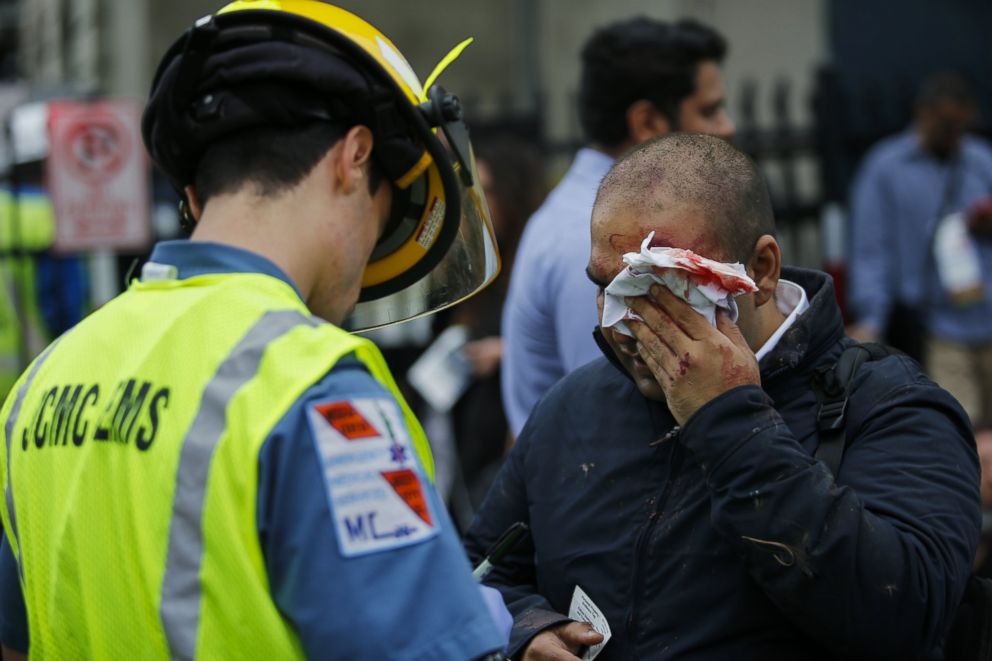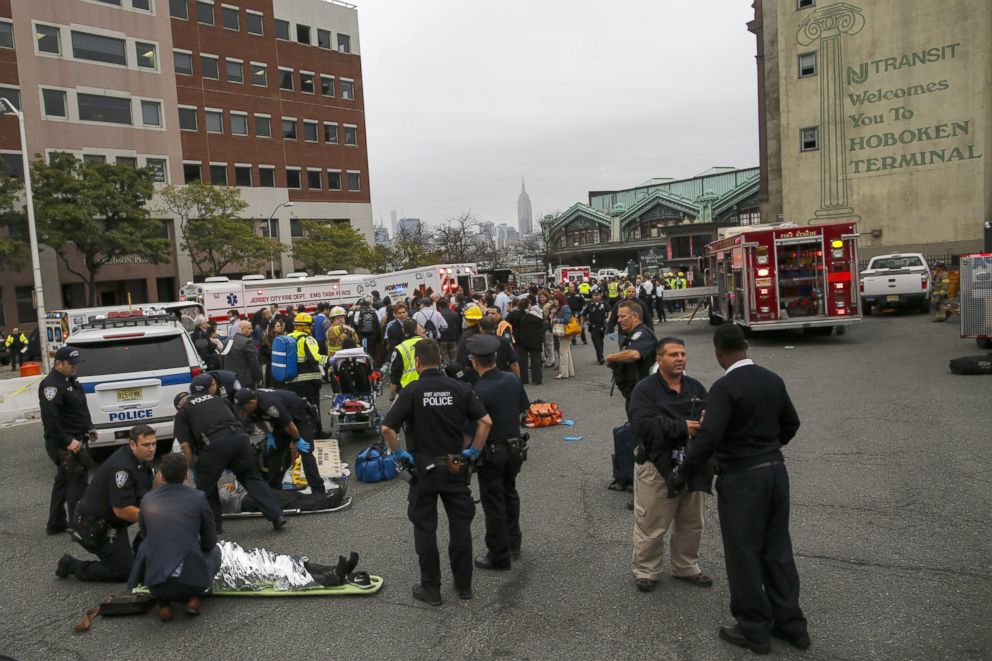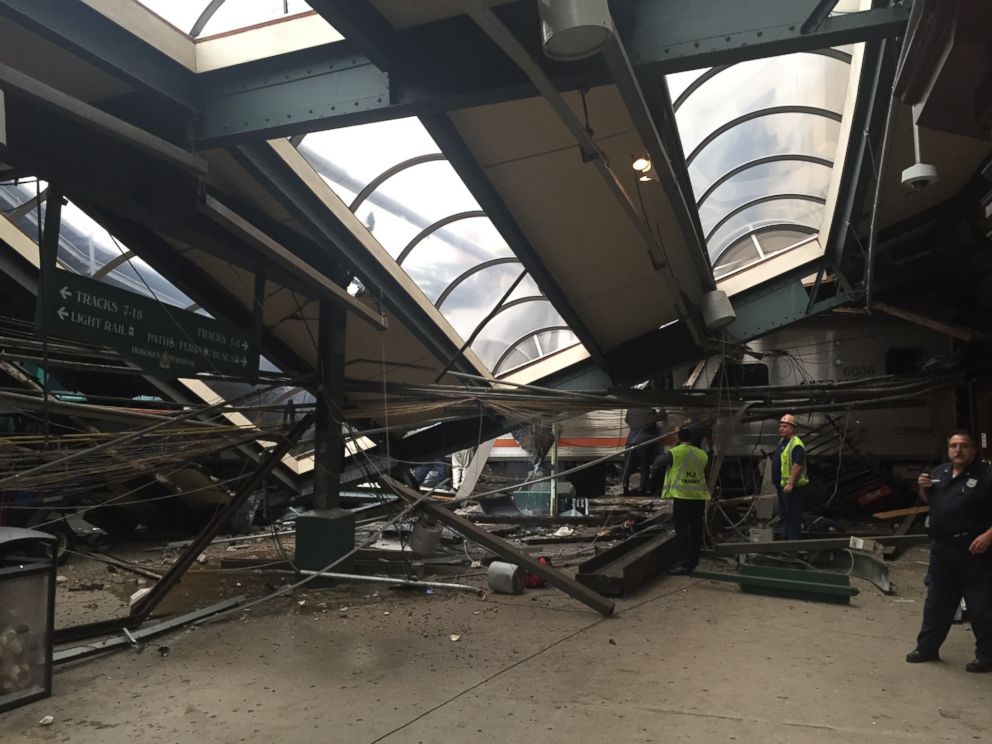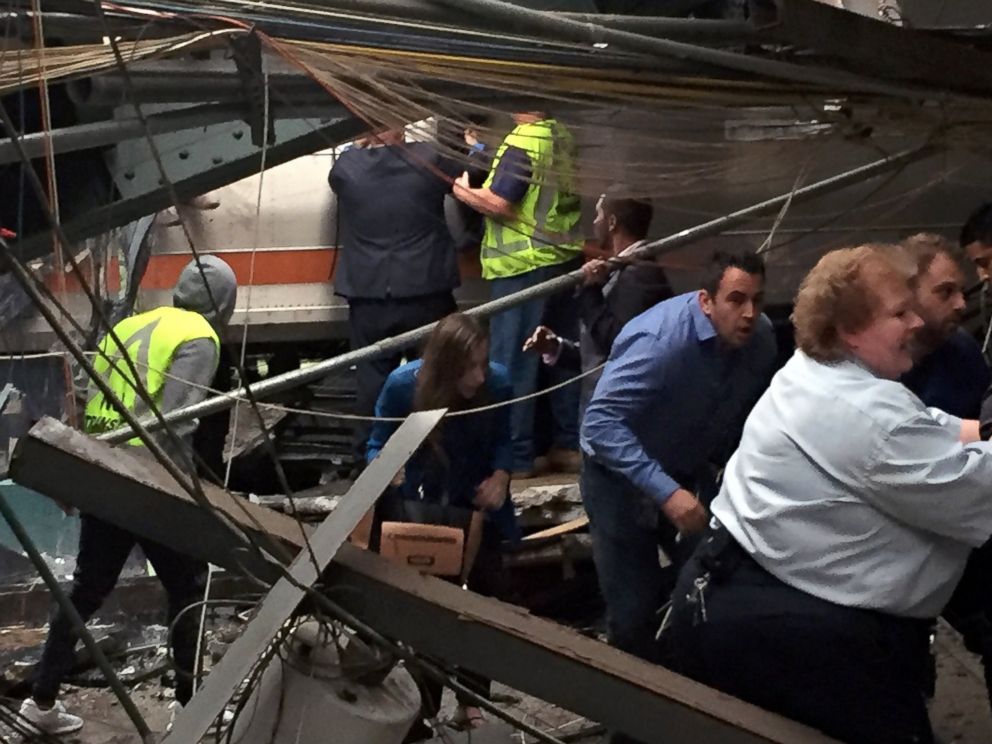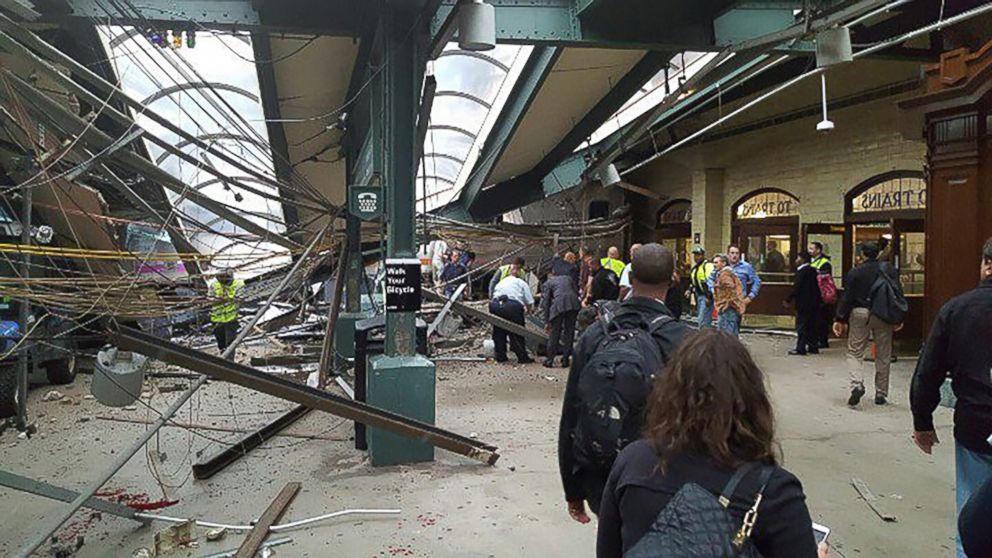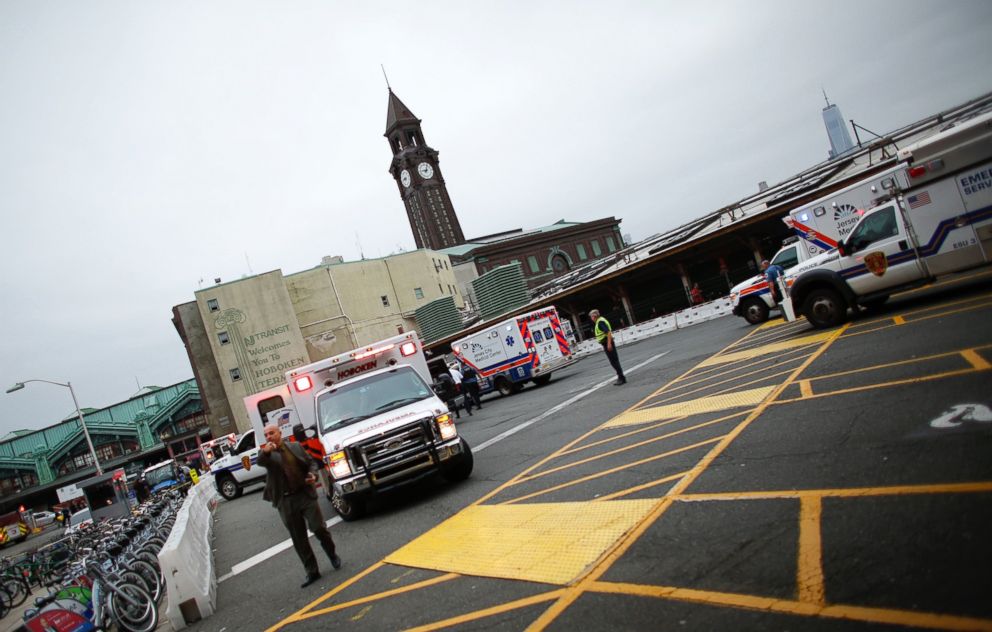NJ Transit Crash: What We Know
Investigators will examine human factors and mechanical issues.
— -- One woman has died, and 108 other people were injured after a New Jersey Transit commuter train crashed into Hoboken Terminal in Hoboken, New Jersey, around 8:45 a.m. today.
Investigators are still working to determine the cause of the crash.
What we know: Transit officials tell ABC News that Train 1614, which originated in Rockland County, New York, crashed through a barrier at the end of the track, plowing into a platform and causing a partial collapse of the terminal's roof.
According to federal officials, the sole fatality was a woman standing on the train platform who was hit by debris from the crash. Two other people suffered life-threatening injuries, and dozens of others are being treated for minor injuries at area hospitals.
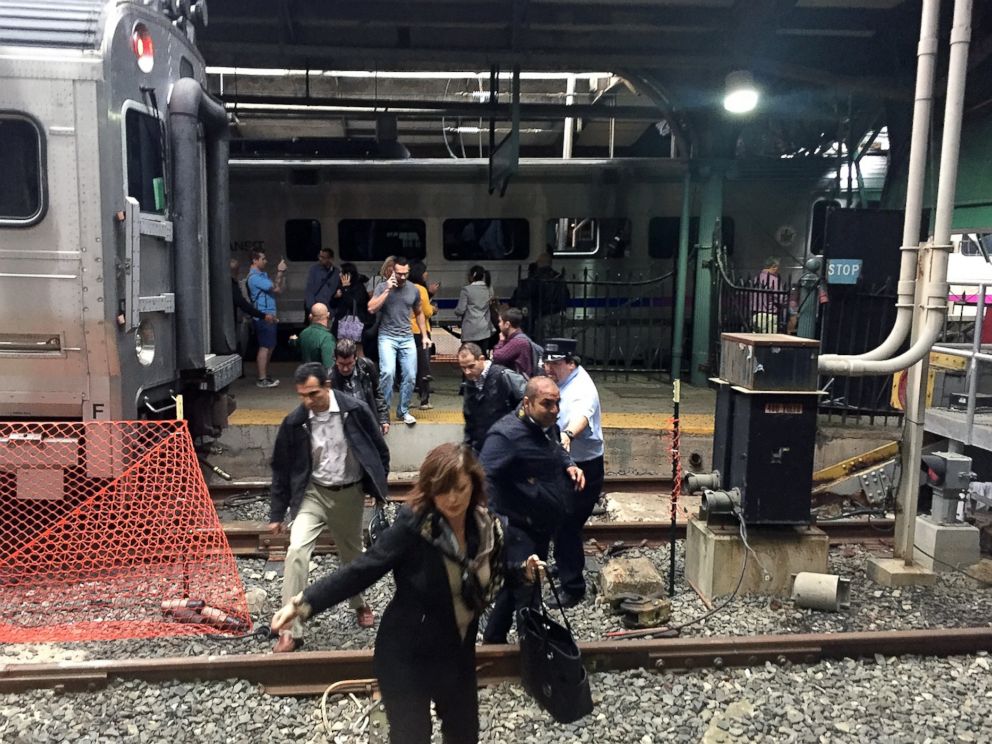
The train was traveling at a "high rate of speed" when it crashed, according to New Jersey Gov. Chris Christie.
The train's engineer has been hospitalized and is in stable condition, according to the Brotherhood of Locomotive Engineers, a union that represents train engineers. He is cooperating with investigators, Christie said.
According to the Federal Railroad Administration, the track lacked positive train control technology, which can automatically stop speeding trains when the engineer fails to pull the brake.
The National Transportation Safety Board and New Jersey authorities are investigating the incident.
NJ Transit Train Crashes Into Hoboken Terminal
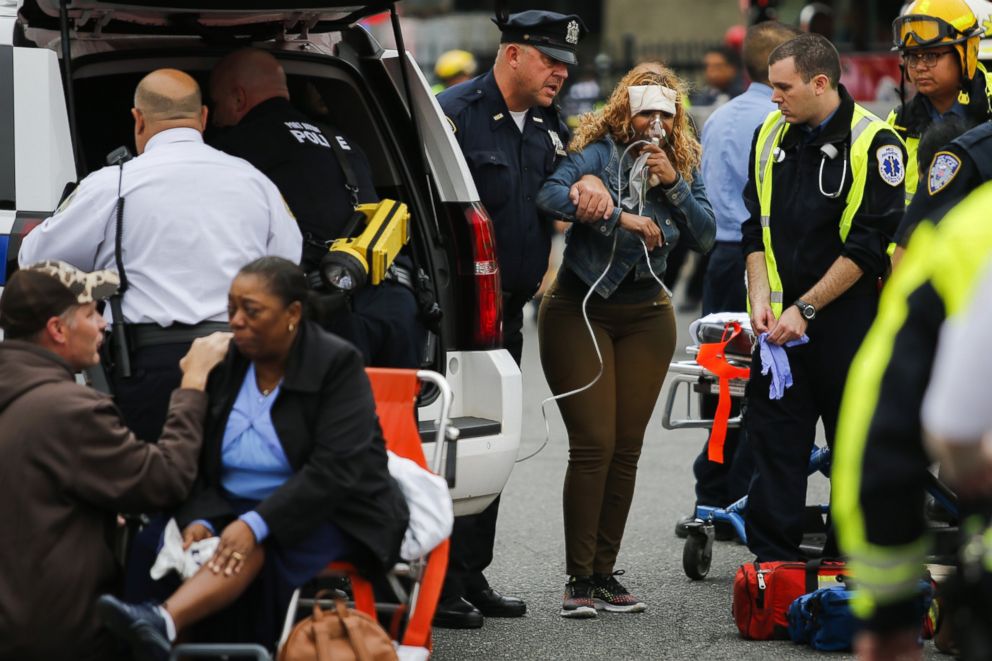
What investigators want to know: Investigators will likely examine a number of factors, such as whether the engineer was fatigued or recently ingested drugs or alcohol.
They will also look for signs of a mechanical failure and investigate the condition of the tracks and the signage leading to the station.
Authorities tell ABC News they have no reason to believe the crash was the result of foul play.
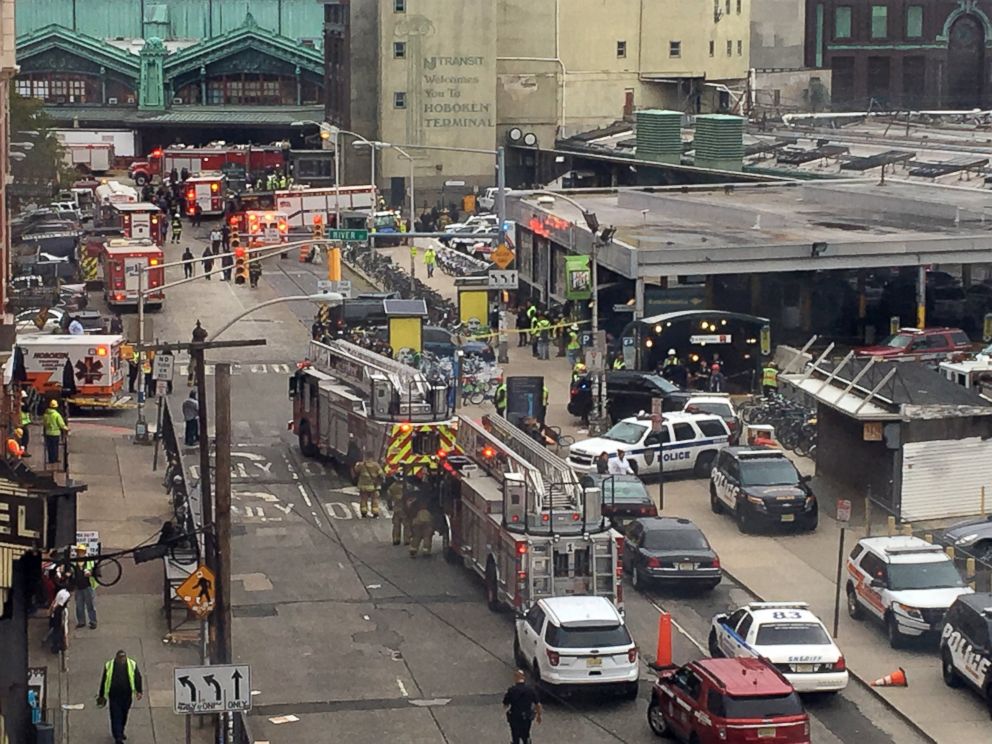
Station history: Today’s crash isn’t the first significant incident to occur at Hoboken Terminal.
In May 2011 a PATH commuter train crashed into the bumpers at the end of a different set of tracks, injuring more than 30 people.
The NTSB later blamed the engineer’s failure to control the train’s speed as it entered the station. The locomotive was traveling at an estimated 13 mph when it crashed, according to the NTSB report.
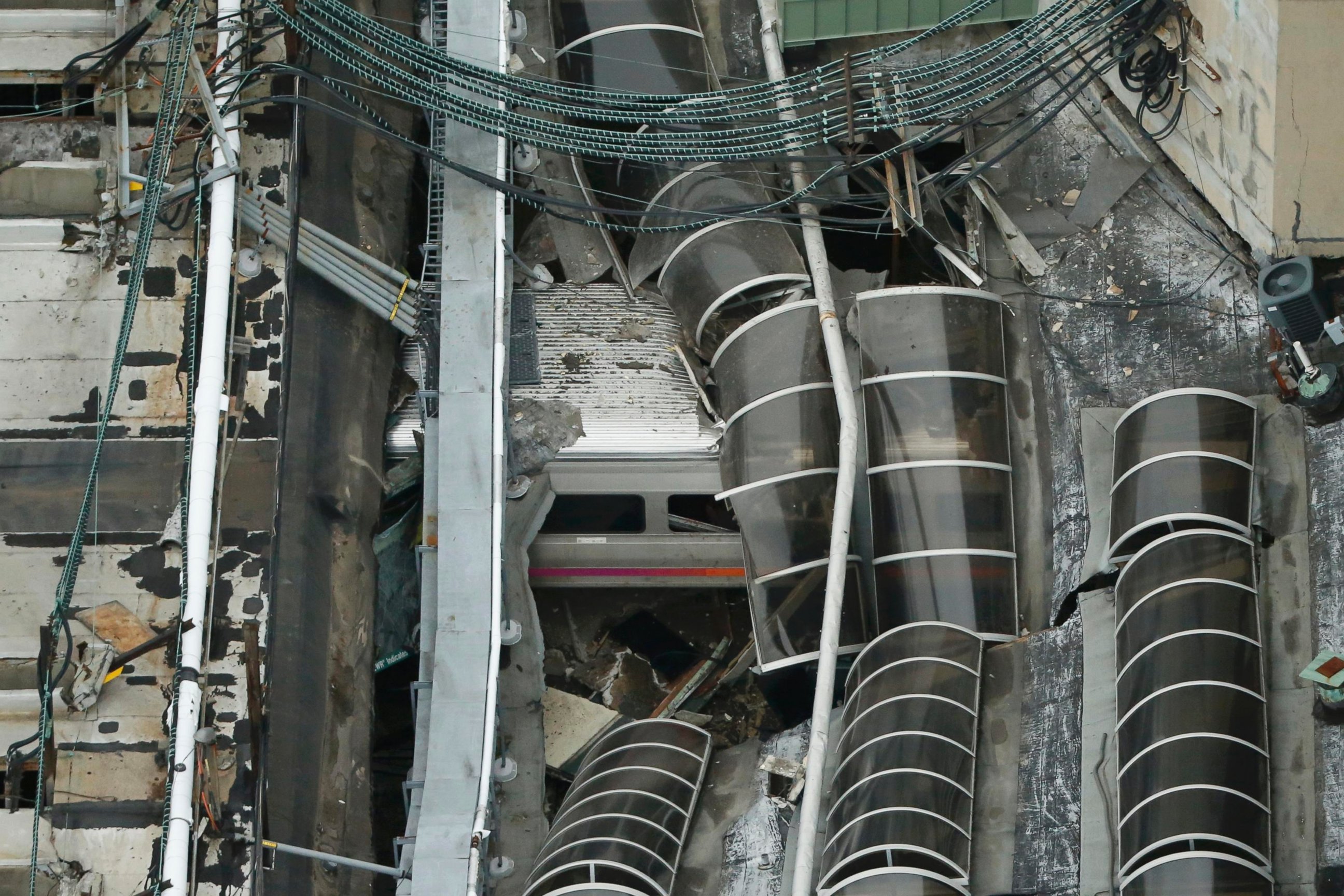
The agency has confirmed that it will investigate similarities between today’s crash and the incident in 2011.
ABC News' Josh Margolin, Troy McMullen, Aaron Katersky, Jeffrey Cook and Mark Crudele contributed to this report.
